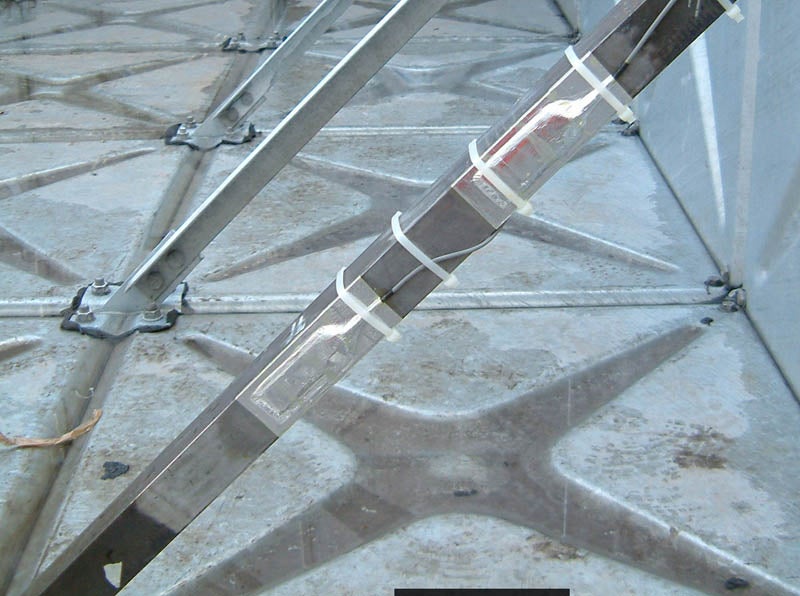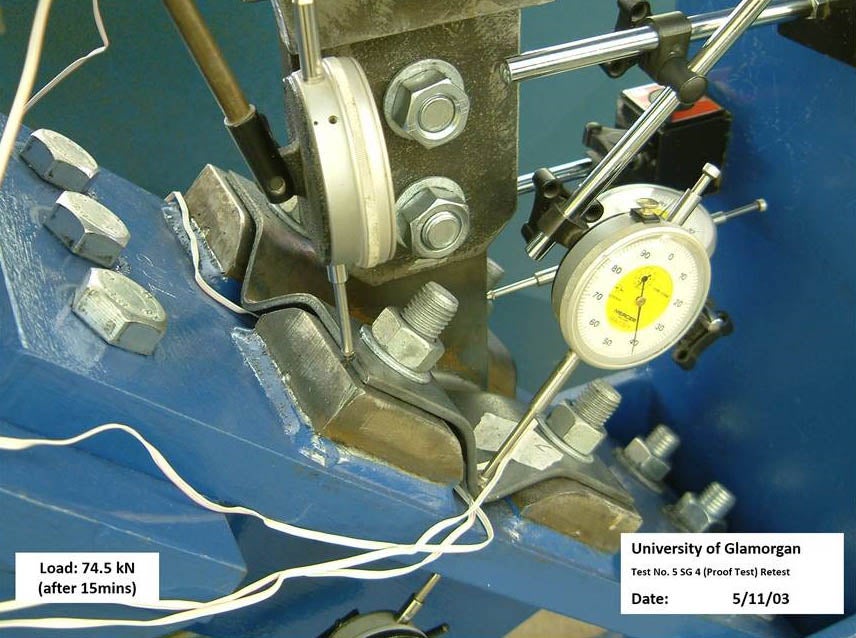Braithwaite pressed steel sectional water tanks
In the construction of sectional steel pressed tanks, a variety of connections is used, and in this short case study written by Dale Price, Structural Engineer at Structural Science Ltd., the stay connection is discussed which supports the horizontal hydrostatic water pressures exerted on the walls of the tank.
About the tested connection
As you can see in Figure 1, the steel bolted stay connection or cleats consists of a thin baseplate with a welded fin plate connecting the angle stay between the base and walls or the wall corners of the tank and can be subjected to 75 kN design tension force in normal cases.
Historically, design is normally undertaken by hand calculations and verification of connections has been confirmed by preparing expensive full-scale laboratory testing of components and testing full-scale site mock-ups of tanks.
The picture below shows recent full-scale testing of a tank where a stay is connected to strain gauges which continually monitor the load on tank stays during water filling and long static water tests.
Back in the laboratory, next image shows the stay connection being proof-tested to code requirements (and of course other strength and failure tests not shown here).
The stay connection has been analyzed with IDEA StatiCa Connection, and the below screenshots summaries the procedure:
The overall arrangement of the connection with bolts and welds with 75 kN design axial load to the stays, the equivalent stress plots indicating the areas of highly stressed components, and an indication of developed plastic strains on the baseplate.
Of course, except pure analysis results, more importantly, IDEA StatiCa Connection provides the overall EN/AISC checks for all elements, as it is shown in the next two images, giving us very clear Pass/Fail results.
In conclusion, the connection behavior and load correlation between full-scale/laboratory testing and CBFEM software were very good, and therefore, the full-scale testing program confirmed the validity and accuracy of the IDEA StatiCa software for connection design. In general, future bespoke connection designs can now quickly realized using this software without implementing and planning costly and long period testing programs. The software is currently being used to rationalize and develop better connection designs with benefit saving in cost and manufacturing processes. Other difficult bespoke connections related to the tank design are now being investigated using the IDEA StatiCa Connection software.
Deformed shape representation helps the engineer to have a better understanding of the connection’s behavior
Summarizing, some of the key benefits of using IDEA StatiCa are:
- Reduce the period of the desk-based and repetitive connection design work.
- The ability to model all the components of the connection in one design, i.e. weld, bolts, plates, and sections in one assembly and understand the better interaction between individual components and comparing this against breaking up the connection into individual design component.
- Continually investigate, develop, and research old and new bespoke connections without planning long and expensive full-scale test programs to verify connection designs.
- Improve existing connections by rationalizing plate or section sizes, vary configurations for manufacturing costs, and verify increased design forces from the normal design for example earthquake forces subjected to tank walls.
- The full-scale testing has provided confidence in the implementation of designing such connections using finite elements and specifically IDEA StatiCa Connection software which is based on the new CBFEM method.
- Choose designs with updated different country connection standards.

Braithwaite Engineers
United Kingdom








